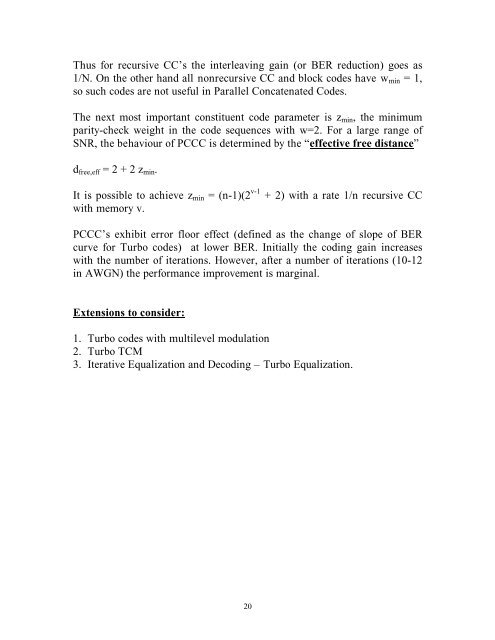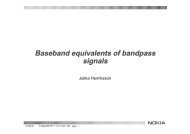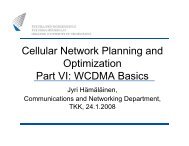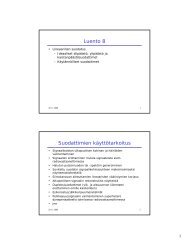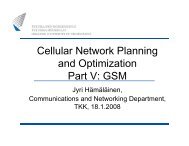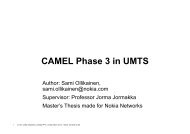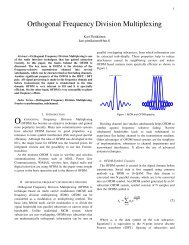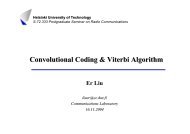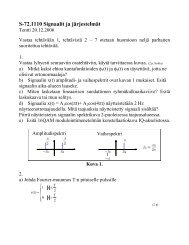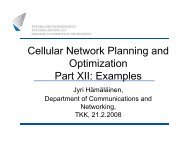Lecture notes on turbo codes.
Lecture notes on turbo codes.
Lecture notes on turbo codes.
You also want an ePaper? Increase the reach of your titles
YUMPU automatically turns print PDFs into web optimized ePapers that Google loves.
Thus for recursive CC’s the interleaving gain (or BER reducti<strong>on</strong>) goes as1/N. On the other hand all n<strong>on</strong>recursive CC and block <strong>codes</strong> have w min = 1,so such <strong>codes</strong> are not useful in Parallel C<strong>on</strong>catenated Codes.The next most important c<strong>on</strong>stituent code parameter is z min , the minimumparity-check weight in the code sequences with w=2. For a large range ofSNR, the behaviour of PCCC is determined by the “effective free distance”d free,eff = 2 + 2 z min .It is possible to achieve z min = (n-1)(2 v-1 + 2) with a rate 1/n recursive CCwith memory v.PCCC’s exhibit error floor effect (defined as the change of slope of BERcurve for Turbo <strong>codes</strong>) at lower BER. Initially the coding gain increaseswith the number of iterati<strong>on</strong>s. However, after a number of iterati<strong>on</strong>s (10-12in AWGN) the performance improvement is marginal.Extensi<strong>on</strong>s to c<strong>on</strong>sider:1. Turbo <strong>codes</strong> with multilevel modulati<strong>on</strong>2. Turbo TCM3. Iterative Equalizati<strong>on</strong> and Decoding – Turbo Equalizati<strong>on</strong>.20


